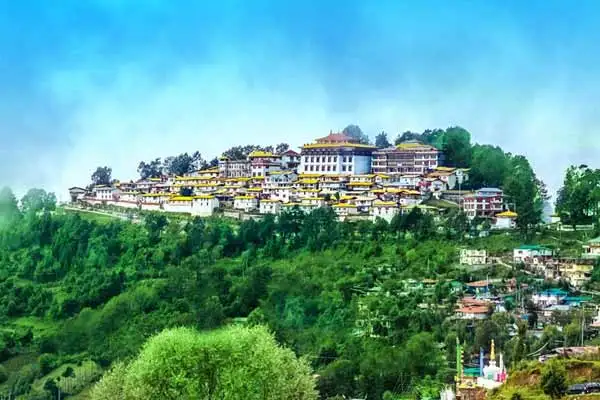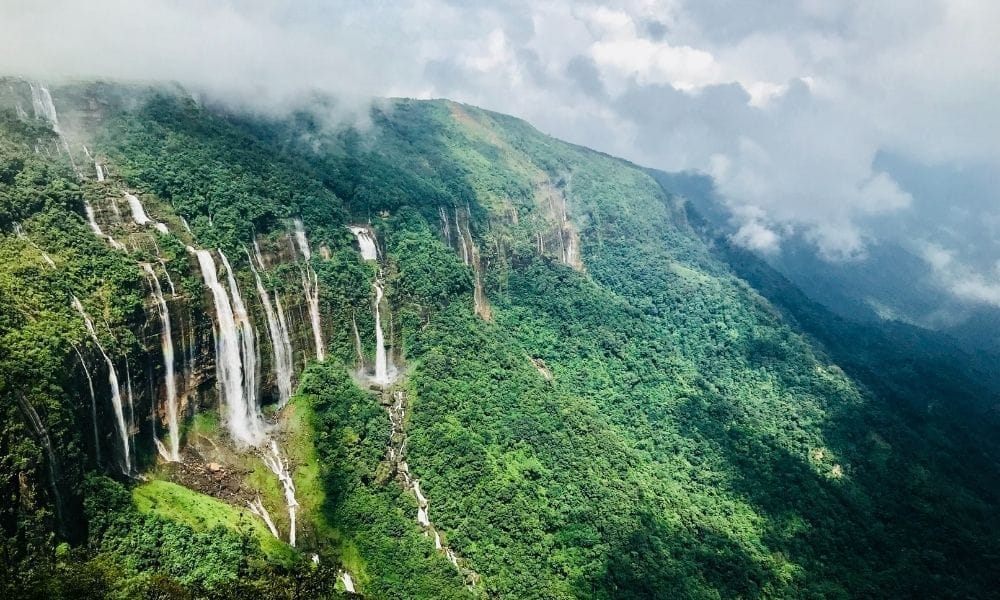1. INTRODUCTION
Often referred to as the “Seven Sisters,” Northeast India is comprised of seven states and their “brother,” Sikkim. Although this region covers only 8% of India’s total land area, it is filled with natural beauty, unique cultures, and diverse traditions. One of the best ways to experience this enchanting region is by taking The Meghalayan Express, a train journey that offers a scenic route through the heart of Northeast India. From towering mountains to deep rivers, vibrant festivals to rare wildlife, Northeast India has much to explore.
2. THE HIMALAYAN CONNECTION
The northeastern states are home to about 35% of the Indian Himalayan Range. These mountains offer great opportunities for adventure lovers, from the rolling hills of Meghalaya to the towering peaks of Arunachal Pradesh, which reach heights of up to 7,500 meters. About 70% of the region is covered with hills and mountains, making it a paradise for nature lovers and trekkers.
3. UNIQUE BORDERS AND COLLECTIONS
Northeast India shares only 2% of its border with the rest of India, while the remaining 98% is surrounded by countries like China, Myanmar, Bhutan, Bangladesh, and Nepal. This makes the region culturally rich, with over 220 ethnic groups and nearly 200 languages spoken. This diversity makes the region feel very different from the rest of India.
4. LAND OF MANY FIRSTS
Arunachal Pradesh is the first state in India to receive sunlight every morning. The village of Dong in Anjaw district gets the first sunrise in the country.
Mawlynnong, Meghalaya is called “Asia’s cleanest village.” It follows strict cleanliness rules, has bamboo trash bins everywhere, and even recycles waste into organic manure. The village also follows a matrilineal system, where family names and property pass through the mother’s side.
Mawsynram, Meghalaya is the wettest place on Earth, receiving about 467 inches of rainfall every year. In 1985, it received a record 1,000 inches of rain!
5. MANIPUR’S SPECIAL FEATURES
Ima Market in Imphal is the only market in the world run entirely by women. No men are allowed to set up shops here.
Keibul Lamjao National Park is the world’s only floating national park, located on Loktak Lake. It is home to the rare Sangai deer, also known as the “dancing deer.”

Manipur is the birthplace of Polo, originally called “Sagol Kangjei.”
6. SUSTAINABILITY AND INNOVATION
Sikkim became the world’s first fully organic state in 2016, banning chemical fertilizers and pesticides.
Majuli Island in Assam is the largest river island in the world, while Umananda Island is the smallest inhabited river island.
Mizoram follows the “shop without shopkeepers” concept, where customers take goods and leave money in a box, showing high levels of trust and honesty.
Jonbeel Mela in Assam and Meghalaya still practices the barter system, where people trade goods without using money.
7. MEGHALAYA’S SINGING VILLAGE
Kongthong Village in Meghalaya has a unique tradition where every person has a musical tune as their name. People call each other by whistling these tunes instead of using regular names.
Northeast India is a land of breathtaking landscapes, rich traditions, and fascinating stories. From floating parks to musical names, the region is full of wonders waiting to be explored.


